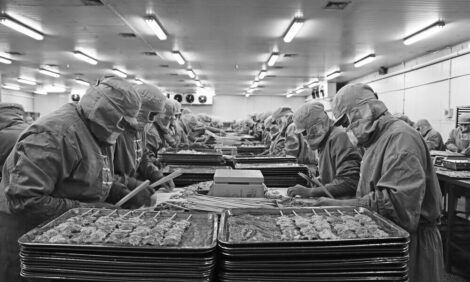



Maximising Grass Intake of High Yielding Cows
UK - Researchers at Harper Adams University College are investigating how to maximise the grass intake of high-yielding dairy cows, and the effect this has on their performance.The project, sponsored by DairyCo in conjunction with Nottingham University and the Royal Veterinary College, is also looking at aspects relating to behaviour and welfare, as well as monitoring their methane production.
Professor Liam Sinclair, said: “Dairy cows have been accused of producing a lot of methane, and approximately 8% of their energy intake is lost as this on a daily basis. This represents a loss of feed nutrients that the dairy farmer would rather see be converted into milk.
“We are investigating means of reducing methane production in dairy cows by focussing specifically on nutrition and in this case, grass.”
Grass is high in soluble carbohydrates and polyunsaturated fatty acids. Limited evidence suggests that the presence of these may decrease methane production.
Professor Sinclair added: “For the study, we have several groups of cows – one housed inside, one with access to TMR (Total Mixed Ration) whilst grazing, and one with access to grazing only.
“Some cows are grazing during the daytime and others during the evening.
“We know that the composition of grass changes throughout the day, in particular, the levels of sugars increase in the afternoon. So perhaps the cows that are outside at night will eat more grass, which in turn may affect their methane production.”
The study is focussing on high-yielding dairy cows as they cannot take in their required nutrients from grass alone, so need supplementation. The methane production is monitored by a backpack which takes samples of the gas.
Professor Sinclair said: “Farmers might be tempted to house cows continually indoors, but grass is the cheapest form of forage, and highly nutritious. There are also welfare and methane production implications from housing indoors.
“We’re hoping that this research will show the most effective means of including grass in diets so farmers can reduce their feed costs and be more methane aware.”
The research is also investigating welfare – and builds on previous studies at Harper Adams which look at giving cows a choice of being inside, or out.
Head of Animal Health and Welfare, Dr Mark Rutter said: “For the farmer, it’s quite difficult for them to give cows a choice of being inside or out.
“One option is to put the cows out for part of the day around milking, so either during the day or the night.
“Previous studies at other institutions have shown that cows with access to pasture have lower levels of lameness and mastitis so there are health benefits too.
“But for this study, we’re looking at their behaviour and comparing the cows that are inside with those that are out - trying to understand from the cow’s point of view, what is a good way of improving their welfare by allowing them to exhibit their normal behaviour out at pasture.”
TheCattleSite News Desk


